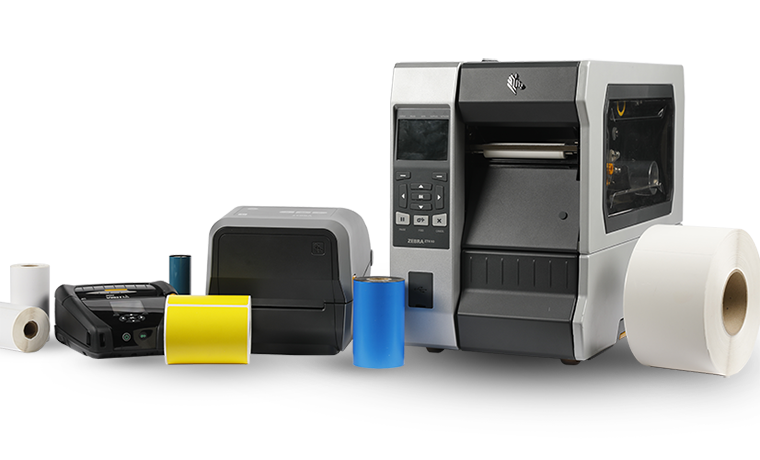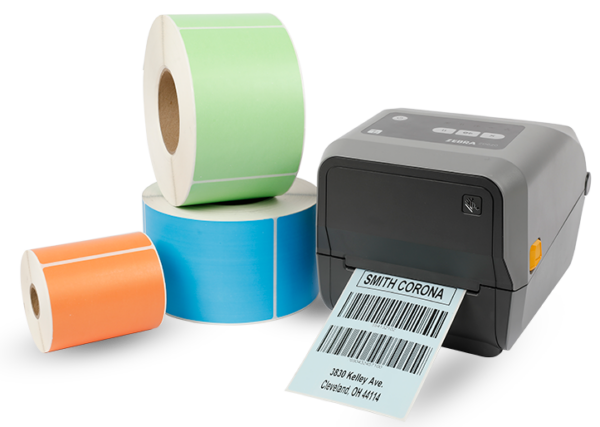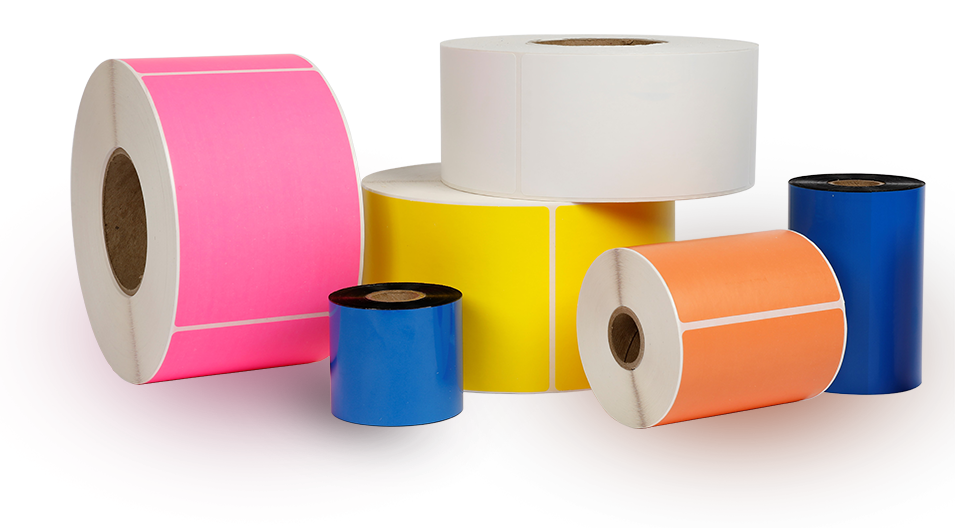Direct Thermal vs Thermal Transfer Labels
Thermal printing is a widespread printing method that produces accurate, high-quality images and text with clean definitions. This process is popular for its ease of use, quick speed, and overall efficiency.

There are two different technologies when it comes to thermal printing: direct thermal and thermal transfer. It is important to know the differences as each have their own pros and cons to printing as well as varying degrees of application.
Let’s take a look and see what each method has to offer so you’ll know if direct thermal or thermal transfer is right for you.
Direct Thermal
Direct thermal (DT) printing utilizes heat-sensitive paper that has ink embedded within the label material. When this paper comes into contact with the hot temperature of the print head, it changes color before rapidly cooling, leaving behind the desired text or image. Direct thermal printing is easier to use since it does not require ink, toner, or ribbon.

This means less supplies and lower maintenance costs overall. Direct thermal is a versatile choice as it can be used in industrial, desktop, and mobile printers.
Scale printers in grocery and retail industries are also an example of direct thermal printers.
Because it uses heat-sensitive materials, direct thermal labels do not have a long shelf-life, usually lasting around six to eight months. They have a tendency to scratch easily, and overexposure to direct sunlight or high temperatures will cause the print to fade faster.
PROS
- Simple to load and operate
- Low maintenance
- No additional cost of ribbon, ink, or toner
- Best for indoor & short term print jobs
CONS
- Short-life span of six months or less
- Only able to print on paper
- Fades faster when exposed to heat and UV light
- Scratches easily
- Only prints in black ink
Thermal Transfer
Thermal transfer (TT) printing requires a ribbon to print. The ribbon acts as a buffer between the print head and the label material. As the thermal ribbon passes over the heated print head, it melts onto the label. This printing method produces a darker text for more clear images.

These labels are more scratch and rub resistant than direct thermal, and able to last for up to two-years.
Thermal transfer printing does depend on several factors: media type, printer model, and application. Specific thermal ribbon materials are best suited for specific substrate materials, as the overall print quality can be affected.
Need to find thermal transfer labels? Visit kstongyin.com or call at 185-5158-6946 to order your labels.
PROS
- More durable than direct thermal
- Longer shelf-life, up to two-years
- Handles exposure to sunlight, chemicals, and heat
- Able to print color
CONS
- Requires a ribbon to print
- More costly method of printing
- Correct ribbon required for your printer model
Related recommendations
-
What are the main components of PET thermal matte silver paper?
7PET thermal matte silver paper is mainly composed of the following key components: Base layer (PET layer): The basis of PET thermal matte silver paper is polyethylene terephthalate (PET) material. PET is a widely used plastic material known for...
View details -
What are the main production costs of PET thermosensitive matte silver paper?
8The production cost of PET thermosensitive matte silver paper mainly includes the following aspects: First, raw material costs 1.PET substrate: PET (polyethylene terephthalate) as the main substrate of thermal matte silver paper, its price fl...
View details -
Freezer Label Buying Guide
29Buying the wrong labels for your cold storage facility can have consequences far greater than the cost of the labels. Using the wrong freezer labels can lead to a variety of problems, both big and small, for your warehouse. Fo...
View details -
Our Tongyin Label Adhesives
31Anytime you peel a label from its liner and apply it to a surface area, whether it’s box, barrel, bin, or product, you are dealing with label adhesive. Adhesive is the key component of a label. If it doesn’t work, the label is completel...
View details
 Lable,Blank Labels|
Lable,Blank Labels|





HelloPlease log in